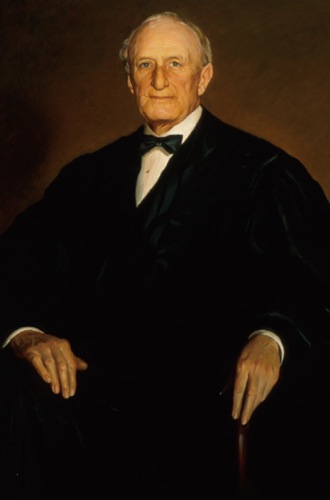|
Blackacre
Blackacre, Whiteacre, Greenacre, Brownacre, and variations are the placeholder names used for fictitious estate (law), estates in land. The names are used by professors of law in common law jurisdictions, particularly in the area of real property and occasionally in contracts, to discuss the rights of various parties to a piece of land. A typical law school or bar exam question on real property might say: Where more than one estate is needed to demonstrate a pointperhaps relating to a dispute over boundaries, easements or riparian rightsa second estate will usually be called Whiteacre, a third, Greenacre, and a fourth, Brownacre. Origin Jesse Dukeminier, author of one of the leading series of textbooks on property, traces the use of Blackacre and Whiteacre for this purpose to a 1628 treatise by Sir Edward Coke. Dukeminier suggests that the term might originate with references to colors associated with certain agriculture, crops ("peas and beans are black, cereal, corn and potat ... [...More Info...] [...Related Items...] OR: [Wikipedia] [Google] [Baidu] |
Future Interest
In property law and real estate, a future interest is a legal right to property ownership that does not include the right to present possession or enjoyment of the property. Future interests are created on the formation of a defeasible estate; that is, an estate with a condition or event triggering transfer of possessory ownership. A common example is the landlord-tenant relationship. The landlord may own a house, but has no general right to enter it while it is being rented. The conditions triggering the transfer of possession, first to the tenant then back to the landlord, are usually detailed in a lease. As a slightly more complicated example, suppose O is the owner of Blackacre. Consider what happens when O transfers the property, "to A for life, then to B". Person A acquires possession of Blackacre. Person B does not receive any right to possess Blackacre immediately; however, once person A dies, possession will fall to person B (or his estate, if he died before person A) ... [...More Info...] [...Related Items...] OR: [Wikipedia] [Google] [Baidu] |
Placeholder Name
Placeholder names are intentionally overly generic and ambiguous terms referring to things, places, or people, the names of which or of whom do not actually exist; are temporarily forgotten, or are unimportant; or in order to avoid stigmatization, or because they are unknowable or unpredictable given the context of their discussion; or to deliberately expunge direct use of the name. Placeholder names for people are often terms referring to an average person or a predicted persona of a typical user. Linguistic role These placeholders typically function grammatically as nouns and can be used for people (e.g. '' John Doe, Jane Doe''), objects (e.g. '' widget''), locations ("Main Street"), or places (e.g. ''Anytown, USA''). They share a property with pronouns because their referents must be supplied by context; but, unlike a pronoun, they may be used with no referent—the important part of the communication is not the thing nominally referred to by the placeholder, but ... [...More Info...] [...Related Items...] OR: [Wikipedia] [Google] [Baidu] |
Cereal
A cereal is a grass cultivated for its edible grain. Cereals are the world's largest crops, and are therefore staple foods. They include rice, wheat, rye, oats, barley, millet, and maize ( Corn). Edible grains from other plant families, such as amaranth, buckwheat and quinoa, are pseudocereals. Most cereals are annuals, producing one crop from each planting, though rice is sometimes grown as a perennial. Winter varieties are hardy enough to be planted in the autumn, becoming dormant in the winter, and harvested in spring or early summer; spring varieties are planted in spring and harvested in late summer. The term cereal is derived from the name of the Roman goddess of grain crops and fertility, Ceres. Cereals were domesticated in the Neolithic around 8,000 years ago. Wheat and barley were domesticated in the Fertile Crescent; rice and some millets were domesticated in East Asia, while sorghum and other millets were domesticated in West Africa. Maize was domesticat ... [...More Info...] [...Related Items...] OR: [Wikipedia] [Google] [Baidu] |
Vanderbilt Law School
Vanderbilt University Law School (also known as VLS) is the law school of Vanderbilt University. Established in 1874, it is one of the oldest law schools in the southern United States. Vanderbilt Law enrolls approximately 640 students, with each entering Juris Doctor class consisting of approximately 175 students. According to Vanderbilt Law School's 2020 ABA-required disclosures, 84.44% of the Class of 2020 obtained full-time, long-term, bar examination passage-required employment nine months after graduation, excluding solo practitioners. The dean of the law school is Chris Guthrie, who began his third five-year appointment as dean on July 1, 2019. History Vanderbilt Law School was established in 1874, and was the first professional school to open (Vanderbilt University itself did not start its undergraduate classes until 1875). The law school's first class consisted of only seven students and eight professors, with a two-year course of study comprising the school's curriculu ... [...More Info...] [...Related Items...] OR: [Wikipedia] [Google] [Baidu] |
Sydney Law School
Sydney Law School (informally Sydney Law or SLS) is the law school at the University of Sydney, Australia, Australia's oldest university. Sydney Law School began a full program of legal instruction in 1890 following the appointment of its first dean, having offered legal examinations since 1855. The law school has produced many leaders in law and politics, including six Prime Minister of Australia, Prime Ministers, four List of Australian Leaders of the Opposition, Federal Opposition Leaders, two Governor-General of Australia, Governors-General, eleven Attorney-General of Australia, Federal Attorneys-General, and 20 out of 56 List of justices of the High Court of Australia, justices of the High Court (plus five from the broader University)—more than any other law school in Australia. The school has also produced 24 Rhodes Scholars and several Gates Cambridge Scholarship, Gates Scholars. In 2010, the School replaced its graduate-entry Bachelor of Laws (LL.B.) degree with the Jur ... [...More Info...] [...Related Items...] OR: [Wikipedia] [Google] [Baidu] |
University Of Texas School Of Law
The University of Texas School of Law (Texas Law) is the Law school in the United States, law school of the University of Texas at Austin, a public university, public research university in Austin, Texas. According to Texas Law’s American Bar Association, ABA disclosures, 87.20% of the Class of 2022 obtained full-time, long-term bar passage required employment (i.e. as attorneys) nine months after graduation. In 2017, the school had 19,000 living alumni. Amongst its alumni are former U.S. Supreme Court Justice and U.S. Attorney General Tom C. Clark; former U.S. Secretary of State James A. Baker; former U.S. Secretary of Treasury Lloyd Bentsen; former White House senior advisor Paul Begala; former Speaker of the U.S. House of Representatives Sam Rayburn; former litigator Sarah Weddington who represented Jane Roe in the landmark case ''Roe v Wade''; and Wallace B. Jefferson, the first African American Chief Justice of the Texas Supreme Court. History The University of Texas Sch ... [...More Info...] [...Related Items...] OR: [Wikipedia] [Google] [Baidu] |
Arpent
An arpent (, sometimes called arpen) is a unit of length and a unit of area. It is a pre-metric French unit based on the Roman ''actus''. It is used in Quebec, some areas of the United States that were part of French Louisiana, and in Mauritius and the Seychelles. Etymology The word ''arpent'' is believed to derive from the Late Latin ''arepennis'' (equal to half a '' jugerum''), which in turn comes from the Gaulish *''are-penno''- ("end, extremity of a field"). Unit of length There were various standard arpents. The most common were the arpent used in North America, which was defined as 180 French feet (', of approximately ), and the arpent used in Paris, which was defined as 220 French feet. * In North America, 1 arpent = 180 French feet = about 192 English feet = about 58.47 metres * In Paris, 1 arpent = 220 French feet = about 234 English feet = about 71.46 metres Unit of area Historically, in North America, 1 (square) arpent ('), also known as a French acre, was 180 ... [...More Info...] [...Related Items...] OR: [Wikipedia] [Google] [Baidu] |
Napoleonic Code
The Napoleonic Code (), officially the Civil Code of the French (; simply referred to as ), is the French civil code established during the French Consulate in 1804 and still in force in France, although heavily and frequently amended since its inception. Although Napoleon himself was not directly involved in the drafting of the Code, as it was drafted by a commission of four eminent jurists,Robert B. Holtman, ''The Napoleonic Revolution'' (Baton Rouge: Louisiana State University Press, 1981) he chaired many of the commission's plenary sessions, and his support was crucial to its enactment. The code, with its stress on clearly written and accessible law, was a major milestone in the abolition of the previous patchwork of feudal laws. Historian Robert Holtman regards it as one of the few documents that have influenced the whole world. The Napoleonic Code was not the first legal code to be established in a European country with a civil-law legal system; it was preceded by the ... [...More Info...] [...Related Items...] OR: [Wikipedia] [Google] [Baidu] |
Civil Law (legal System)
Civil law is a legal system rooted in the Roman Empire and was comprehensively codified and disseminated starting in the 19th century, most notably with France's Napoleonic Code (1804) and Germany's (1900). Unlike common law systems, which rely heavily on judicial precedent, civil law systems are characterized by their reliance on legal codes that function as the primary source of law. Today, civil law is the world's most common legal system, practiced in about 150 countries. The civil law system is often contrasted with the common law system, which originated in medieval England. Whereas the civil law takes the form of legal codes, the common law comes from uncodified case law that arises as a result of judicial decisions, recognising prior court decisions as legally binding precedent. Historically, a civil law is the group of legal ideas and systems ultimately derived from the '' Corpus Juris Civilis'', but heavily overlain by Napoleonic, Germanic, canonical, feuda ... [...More Info...] [...Related Items...] OR: [Wikipedia] [Google] [Baidu] |
Law Of Louisiana
Law in the state of Louisiana is based on a more diverse set of sources than the laws of the other 49 states of the United States. Private law has a civil law character, based on French and Spanish codes and ultimately Roman law, with some common law influences. Louisiana is the only state whose private legal system is based on civil law, rather than the traditional American common law. Louisiana's criminal law, however, does largely rest on common law. Louisiana's administrative law is generally similar to the administrative law of the federal government and other states. Louisiana's procedural law is generally in line with that of other U.S. states, which in turn is generally based on the U.S. Federal Rules of Civil Procedure. Sources Legislation The ''Louisiana Revised Statutes'' (R.S.) contain a significant amount of legislation, arranged in titles or codes. Apart from this, the Louisiana Civil Code' forms the core of private law, the Louisiana Code of Civil Proce ... [...More Info...] [...Related Items...] OR: [Wikipedia] [Google] [Baidu] |
Fief
A fief (; ) was a central element in medieval contracts based on feudal law. It consisted of a form of property holding or other rights granted by an overlord to a vassal, who held it in fealty or "in fee" in return for a form of feudal allegiance, services or payments. The fees were often lands, land revenue or revenue-producing real property like a watermill, held in feudal land tenure: these are typically known as fiefs or fiefdoms. However, not only land but anything of value could be held in fee, including governmental office, rights of exploitation such as hunting, fishing or felling trees, monopolies in trade, money rents and tax farms. There never existed a standard feudal system, nor did there exist only one type of fief. Over the ages, depending on the region, there was a broad variety of customs using the same basic legal principles in many variations. Terminology In ancient Rome, a " benefice" (from the Latin noun , meaning "benefit") was a gift of land () f ... [...More Info...] [...Related Items...] OR: [Wikipedia] [Google] [Baidu] |
Sir Francis Buller, 1st Baronet
Sir Francis Buller, 1st Baronet (17 March 1746 – 5 June 1800) was an English judge. Origins Buller was born at Downes House in the parish of Crediton in Devon, a younger son of James Buller (1717–1765), of Downes and of King's Nympton Park, both in Devon and of Morval in Cornwall, a Member of Parliament for Cornwall, by his second wife Lady Jane Bathurst, daughter of Allen Bathurst, 1st Earl Bathurst. As his elder brothers inherited the substantial family estates, Buller as a younger son was obliged to make his own fortune, which he achieved both from his brilliant legal career and from having married a wealthy heiress. Career Legal career After an education at The King's School, Ottery St Mary in Devon, and at Christ's Hospital, London, in February 1763 he entered the Inner Temple as a pupil of William Henry Ashurst, special pleader, and obtained his own certificate as special pleader in 1765. In Easter term 1772 he was called to the bar and rose rapidly, beco ... [...More Info...] [...Related Items...] OR: [Wikipedia] [Google] [Baidu] |



